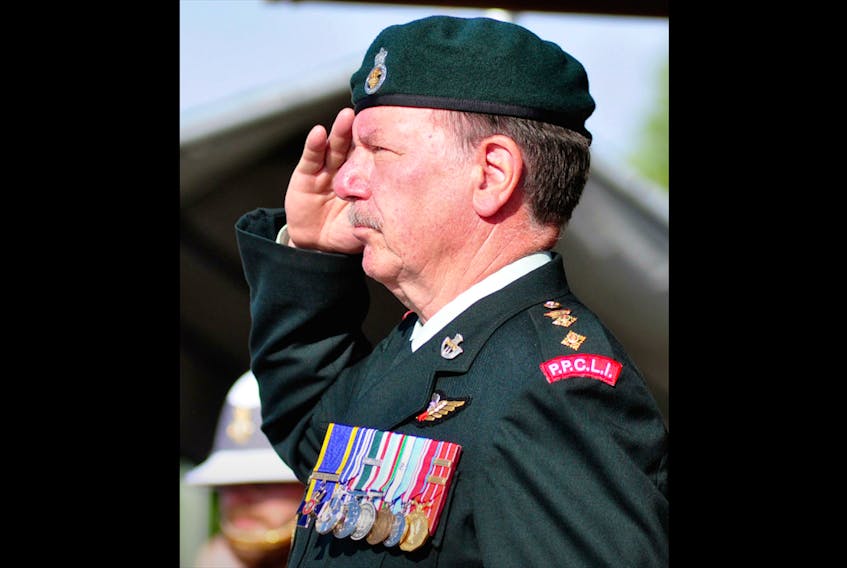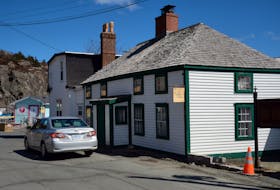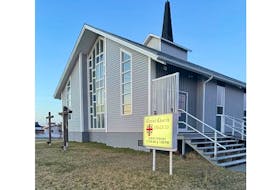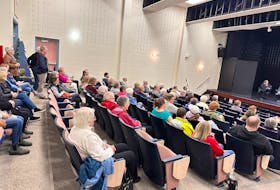PORT WILLIAMS -- The unusual story of Donald Chase of Port Williams, who served during the Second World War in Princess Patricia’s Canadian Light Infantry, was recently written by the new Colonel of the Regiment, Brigadier-General (Retired) Vincent Kennedy.
Kennedy has authored a number of biographical articles about PPCLI soldiers. In 2016, he was sent a newspaper article featuring a letter written by a Princess Pat soldier to his family in Nova Scotia. It caught Kennedy’s interest, so he started to research Chase, accessing his military records in the national archives, obtaining more information from the Acadia University archives and, finally, finding and interviewing his son Ned, who still lived in Port Williams.
“After doing research, it is just left to build the story. But talking to Ned and seeing the documents that he had hauled out of the attic made it personal. It was a heartwarming story from a very terrible war,” said Kennedy, who is planning a trip to Nova Scotia to visit Ned.
- VIDEO: 'You'd become cannon fodder': Berwick veteran recalls serving during Second World War
- Finding love on the tennis courts: Windsor woman recalls growing up in Europe during Second World War
- War brides of Annapolis Valley share their stories
- Wolfville teen with WW1 connection off to Belgium for centennial
- Retired Royal Canadian Navy member from Hants County reflects on his service

The resulting article was published a year ago in “The Patrician”, the regimental journal. In appreciation for Ned’s assistance, Kennedy added additional information and photos and published the story in book format, calling it The King Wrote Twice: the Story of Donald Chase.
Kennedy begins the book with the formation of the Princess Patricias at the beginning of the First World War. They arrived in France on Dec. 21, being the first and only Canadian combat unit on the continent in 1914. After heavy casualties at Battle of Frezenberg in March 1915, a call went out for volunteers. Some companies were formed of university students, including the No. 4 University Company which Chase, and 10 other men from Acadia, joined.
Donald Bedford Chase was born on April 20, 1895 and attended local schools then St. Andrew’s College in Toronto, before entering Acadia to study electrical engineering. After his enlistment and basic training, he joined the Pats in Belgium in March 1916.
On June 2, the Battle of Mount Sorrel began and during the intense bombardment Chase was briefly buried alive, in shock and bleeding from ears and mouth. Later, Chase came across his badly wounded platoon commander, Lt. Hugh Macdonnell, who had also been one of his masters at St. Andrew’s. He stopped to give him first aid and within minutes the two were captured by the Germans.
Chase’s family, notified that he had been killed in action, held a memorial service and published his obituary. They received letters of condolence from the King and Canadian Prime Minister Borden (originally from Grand Pre).
Chase ended up in large prisoner of war camp, Stendal Sante Bernice, near Hanover, Germany. Two months later, in August 1916, the letter that was published in a newspaper 100 years later and had so intrigued Kennedy, would reach his family with its miraculous tidings. The Chase family again received letters from the King and Prime Minister but this time confirming the happy news that their son was alive.
Chase used his electrical engineering knowledge to help build lighting and heating/cooking equipment in the camp. He wrote many letters home to his family over the next two years, once asking for books from which to study and an Acadia catalogue.
Unfortunately, Chase would never return to Acadia. After the war he spent months in military hospitals before being discharged on July 18, 1919, later going into business with his brother, George. He married Marguerite Bancroft in 1924. She died in childbirth, but her daughter Marguerite Bancroft Chase survived and served with the CWAC in the Second World War. In 1934, Chase married Madalyn Elliott and they had three children. He retired from the family business in 1972 and died in 1976.
Chase was deeply affected by the war and his time as a POW and rarely spoke of it.
“These soldiers are as much heroes as others who have served - to have stayed cogent is a testament to their tenacity and courage,” said Kennedy.









